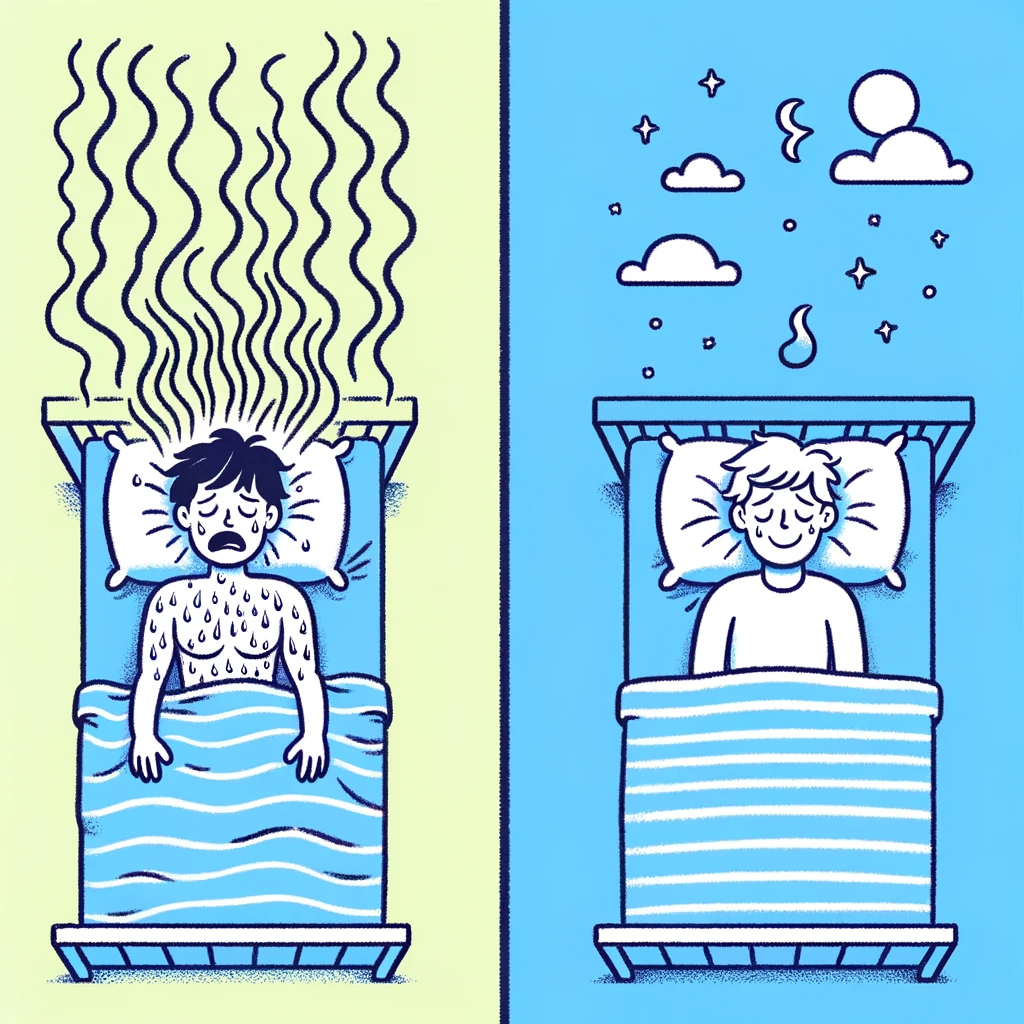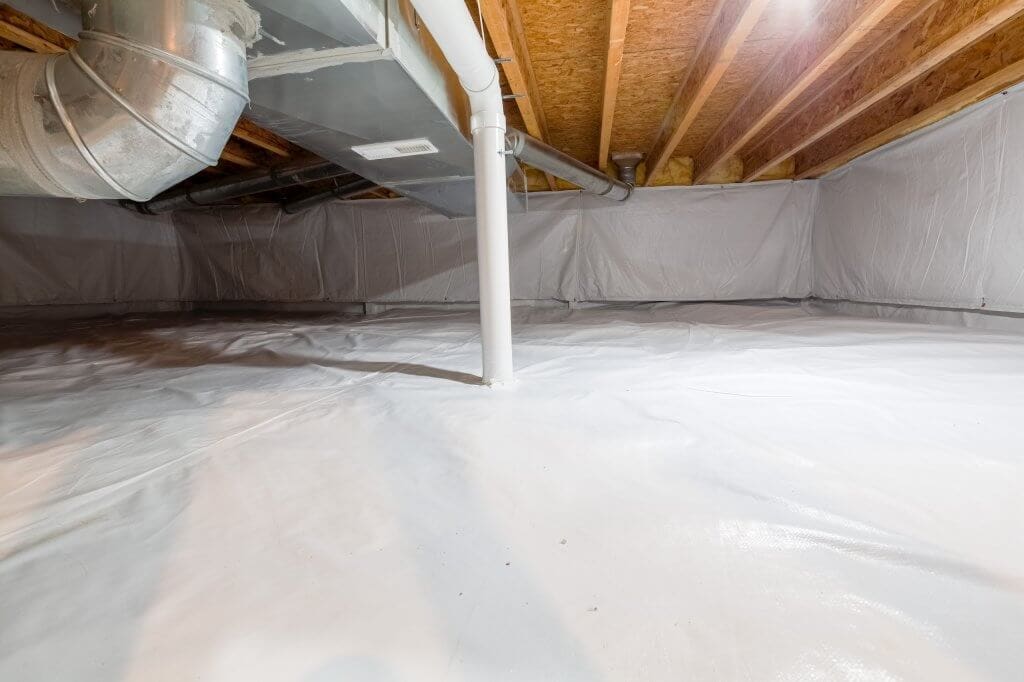Almost half of U.S. homes have mold problems or excessive dampness, according to public data. That’s a staggering number of people affected by poor indoor humidity control. Researchers reviewing indoor humidity studies also noted how many health problems are caused or worsened by humidity extremes. In fact, they estimated that one in five asthma cases is attributable to indoor mold. Excessive dampness and dryness can be a problem in all indoor spaces—homes, businesses, schools, office buildings and the like. However, as a homeowner, you can control the indoor relative humidity in the spaces you live and work in every day. And autumn is the perfect time to prioritize indoor humidity control.
The fall season, and the cooler weather it brings, often highlights poor indoor relative humidity levels. With cooler autumn temperatures, there’s a noticeable drop in humidity levels as well. This is why it’s essential to monitor your home’s relative humidity levels and pursue humidity control options. In doing so, you can keep levels from dropping too low or rising too high.
What Is Indoor Relative Humidity?
Humidity is the concentration of water vapor in the air. There are two ways to measure it. The first is absolute humidity, which is the water or moisture content of air at any temperature. The other is relative humidity, which is the amount of water vapor in the air compared to the maximum possible amount of water vapor.
Indoor relative humidity, therefore, is a measurement of relative humidity levels in an indoor space. Relative humidity (RH) is described in percentages, and the ideal range for indoor spaces is between 40% and 60%.
What Is the Average Residential Indoor RH Level?
One study found that the average indoor relative humidity level across various climates of the U.S. ranged from 47.9% to 53.1%. While the annual averages are within the ideal range, monthly breakdowns of each region show patterns of humidity levels dipping below or rising above the ideal range with the seasons. Additionally, homes in the cold northeast zone registered the lowest RH levels, and those in the northwest marine region had the highest RH levels.
What Causes Lower Relative Humidity in the Fall?
As fall brings cooler temperatures, it also marks the start of using heat instead of AC. Not to mention that homes with lower humidity levels often use space heaters or portable heaters to help warm the space. This is because, though necessary for comfort, heaters reduce indoor relative humidity. Also, cooler outdoor temperatures mean more time spent indoors as well as the end of opening windows during the day, which provides fresh air ventilation and humidity. All of this contributes to drier fall air indoors.
 Fall IAQ: Is your home HVAC system fall ready? Indoor humidity levels aren’t the only indoor air quality issue to be ahead of during the autumn season. Here’s what else you should know →
Fall IAQ: Is your home HVAC system fall ready? Indoor humidity levels aren’t the only indoor air quality issue to be ahead of during the autumn season. Here’s what else you should know →Low indoor relative humidity levels may be more obvious in colder winter climates, but the effects are still noticeable in temperate areas as well. While locales like Southern California won’t experience months of snow and freezing temperatures such as a state like New Hampshire would, the impact of running the heat is still noticeable.
Why Indoor Relative Humidity Matters and How It Impacts Your Space
The general rule to remember when it comes to indoor humidity is that the mid-range is best. You want to avoid the extremes, which can cause both health and home quality issues. Low indoor relative humidity levels are the main concern during the fall and winter months, however high indoor relative humidity can be just as damaging. It is a year-round problem that requires long-term solutions. Here are a couple of ways humidity problems during autumn can exacerbate your health and home.
Health Concerns
Dry air can cause and worsen many health issues. According to researchers, dry air may promote lung issues such as COPD, asthma, influenza and other respiratory concerns. Poor indoor air quality caused by low relative humidity can also trigger more allergy attacks. This is because dry air allows particles, including allergens like mold spores and dust mites, to mix and circulate through the air easier.
Many studies have found that humidity levels affect the survival rate of airborne pathogens. Moreover, indoor relative humidity seems to influence the infectivity of harmful microorganisms. Now more than ever, ensuring ideal humidity levels indoors is a crucial health investment.
Dry air is also what causes some of the more common cold weather ails, like dry skin and chapped lips. The lack of moisture in the air can also worsen cold and flu season or even make you more vulnerable to illness due to drier sinuses.
Damage to Your Home
Materials like wood floors and wood furnishings in your home are extremely susceptible to damage caused by dry indoor air. Risks include cracks in flooring, trim or even window panes. Poor humidity control can also cause problems for your home’s walls, paint and wallpaper. Low humidity levels can even impact musical instruments considering a fair amount are made of wood or have wood parts. This will eventually cause your instruments to sound out of tune. Books are also vulnerable to humidity extremes and will wrinkle without proper humidity control. It’s easy to assume that changes in your home’s surface and valuables simply happen over time, but it’s important to remember that there are IAQ solutions that can help prevent long-term damage.
Ensure the Best Indoor Humidity Level for Fall
Measure
Humidity control is necessary to achieve comfortable indoor humidity levels. The first step is to measure the relative humidity of your space. IAQ experts can do this or you can do it on your own with a hygrometer. A hygrometer is a device that monitors indoor humidity and temperature.
There are also central air monitoring systems that inform, in real-time, about various aspects of your home’s indoor air quality. It’s installed directly into the duct system in your home and sends data to your connected device—including crucial humidity information and levels! With accurate measurements and an idea of the average humidity in your home, an IAQ monitor can help you better determine the best whole-home humidity control solutions.
Control
Heading into the autumn and winter seasons, the best way to control low indoor relative humidity levels is to install a humidifier system to better regulate moisture levels. We recommend choosing whole-home humidifiers rather than portable units. Whole-home systems will do a better job at ensuring ideal indoor relative humidity levels throughout the entire home, while standalone units can only humidify small spaces at once. Some of the best whole-home humidifying systems are:
Steam Humidifiers
A steam humidifier monitors indoor relative humidity via a humidistat. This device looks like a thermostat, except it measures the amount of water vapor present in the air. When it detects low relative humidity levels, it sends a signal to the system. The humidifier then pumps moisture into the air by releasing steam. Your home heater, most likely a furnace or blower, then helps circulate the steam throughout your home, increasing the humidity level everywhere.
Evaporative Humidifiers
Evaporative humidifiers utilize an internal fan to draw air into the system, where it passes through a moisture-saturated wick filter. The filter itself gathers water from an internal reservoir in the unit. After the air passes through the saturated filter, it blows out into the rooms. It repeats this process until your home reaches the desired indoor relative humidity level.
It’s also important to note that an evaporative humidifier’s filter must be kept clean! Similar to HVAC filters, these filters must be checked regularly to ensure healthy indoor air.
 Whole-Home Humidifiers: Looking for more information about whole-home humidity control solutions? Check out our guide comparing steam and evaporative humidifiers →
Whole-Home Humidifiers: Looking for more information about whole-home humidity control solutions? Check out our guide comparing steam and evaporative humidifiers →Keeping Things Balanced
Choosing to invest in a whole-home humidifier will make your home or indoor space safer and healthier for all occupants during the fall and winter seasons when low indoor relative humidity levels are common. It will also help preserve your home and the materials and valuables inside. As we head into the fall season, now is the perfect time to make IAQ upgrades and protect the indoor areas you’ll spend most of your time in the upcoming months.





